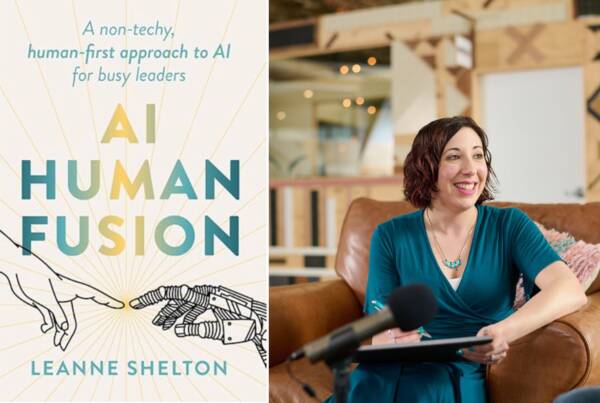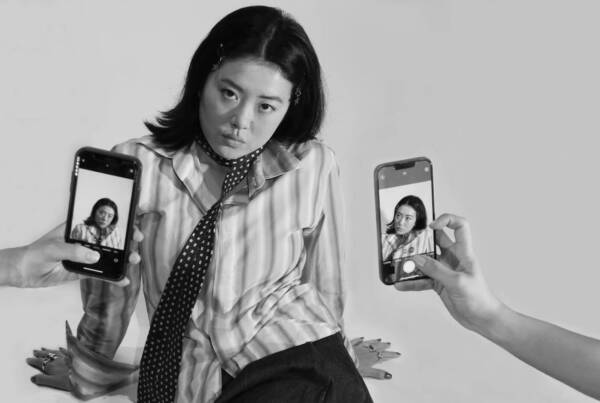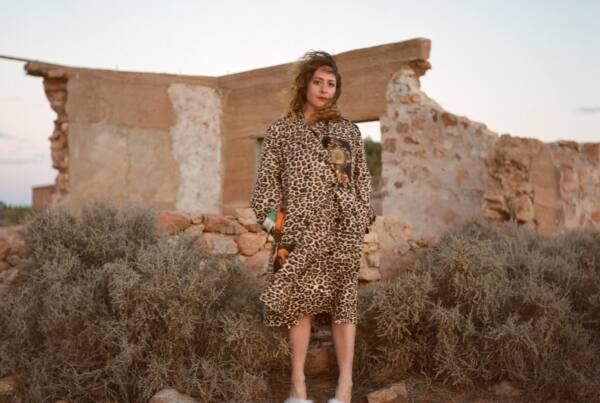Writing by Sarah Sasson
 Whenever I start planning a beach holiday online, the ads start infiltrating my feed: exercises to correct ‘hip dips’, how to choose the most flattering swimming costume, diets guaranteed to shred five kilograms. Generally my reaction is a long, exasperated sigh, and then a little smirk when I remember the “Hot Dog versus Legs” Tumblr site where players had to guess if the long, hairless, tanned limbs adjacent to an inviting water’s edge were in fact legs, or uncooked encased meat product. In the modern era of incessant life-recording via smartphones; of selfies, filters, filler and Botox what if we’ve made a critical error: what if we’ve mistakenly pursued the appearance of being at the beach at the expense of the experience?
Whenever I start planning a beach holiday online, the ads start infiltrating my feed: exercises to correct ‘hip dips’, how to choose the most flattering swimming costume, diets guaranteed to shred five kilograms. Generally my reaction is a long, exasperated sigh, and then a little smirk when I remember the “Hot Dog versus Legs” Tumblr site where players had to guess if the long, hairless, tanned limbs adjacent to an inviting water’s edge were in fact legs, or uncooked encased meat product. In the modern era of incessant life-recording via smartphones; of selfies, filters, filler and Botox what if we’ve made a critical error: what if we’ve mistakenly pursued the appearance of being at the beach at the expense of the experience?
My love of being immersed in water was nurtured by my mother, who grew up in Leeton, a small town in the New South Wales Riverina. She spent her summers at the local outdoor Olympic pool that was pumped full of water from the Murrumbidgee river at the start of the season and emptied at the end of it. The water was brown. As a high-school student, my mother was billeted to Sydney to compete in the State Swimming Championships at North Sydney Pool, and it was at that time that she caught her first glimpses of the city’s aquamarine beaches and became enamoured by them. When my father passed away over ten years ago, my mother was invited to join an early morning swimming collective at Balmoral Beach. She has kept up the early-morning routine through all seasons and has gained fitness, purpose, mood-boosts, and a new community of dawn-swimming friends.
A deep connection with the ocean is common among Australians, with the 2019 National Coastal Safety Report finding over 11 million people participated in beach-related activities. The benefits of having a dip outside of the warmer months, of taking the cold-water plunge is gaining popularity and recognition. Cold-water swimming has been linked to decreased muscle inflammation, lower blood pressure and cholesterol as well as enhancing dopamine and endorphins leading to that ‘natural high.’ Both my mother and mother-in law have taken up near-daily open water swimming; both are thriving in their seventies and it sometimes seems as if they’ve found the fountain of youth down there on the seafloor.
Along the Eastern Sydney beaches near where I now live, I’ve noticed a rise in the use of “beach matting”: a roll of robust black synthetic material laid like a hall-runner from pavement to the shoreline to make the ocean more wheelchair accessible. For a nation with a coastline as long as Australia’s, how much of it can be accessed by people living with disability? And how fair is that, given the huge benefits to well-being? Greece has the right idea: I recently read that inventors there made the Seatrac Bathing Chair which people can sit in and use a remote control to move themselves to be partially submerged in the ocean. Australia needs to order some. If through illness of injury I could no longer swim, I would still ache to put my limbs in the water. If that was impossible, I’d want to feel hot grains of sand, to smell seabreeze.
Over time it’s become obvious that the perfect beach body is not a static thing. I was a kid in the 1980s, when the ideal woman was tall, athletic and had a perm—like the ladies in legwarmers and leotards on home aerobic shows, or Elle Macpherson on the cover of Sports Illustrated. A decade later, as an adolescent in the 90s I shared a particular generational misfortune alongside other young women whose awkward growing, bulging and acne riddled puberty collided with the look du jour: heroin chic. While Kate Moss’ natural waifish beauty is plain to all, there was something deeply rotten about a runway trend where resembling someone with a life-threating addiction become aspirational. These days ideal bodies are thrown at us, not just from tv and magazines, but through our screens and phones; we carry them in our pockets, an endless scroll of Kardashianesques bustlines paired with tiny waistlines and well-rounded backsides. No matter what your supposed “body type”, it would’ve been hard to sail through the last three decades seamlessly metamorphosising from one ideal to the next—without an excessive amount of time at the gym, a probable eating disorder and then a considerable amount of surgery.
In 2017 a photograph from the Australian ambulance service went viral: two officers were tasked with transporting a dying woman to a palliative care unit. During the trip she mentioned how much she’d love to see the beach, just one last time. The ambos took a small detour to Hervey Bay and perched the woman’s gurney on the rocks so that she could take in the horizon. One of the officers even collected a bag of seawater for her to take with her, like a showbag, for the scent of it.
A photo went viral, no hot dogs in sight. I mean, those are my people.
This year all the ridiculous body ideals that do the rounds on social media can get in the bin as far as I’m concerned. And I don’t need to take an internet quiz to determine my body shape, I know what it is: humanoid.
Your best beach body is the one that lets you smell the bitter sweetness of saltwater and rotting seaweed; or lets you feel warm sand sift between your toes; or has you waist-high in the ocean; or —if you’re really lucky—transcend into an underwater world.
Sarah Sasson is the author of Tidelines, out now with Affirm Press.






